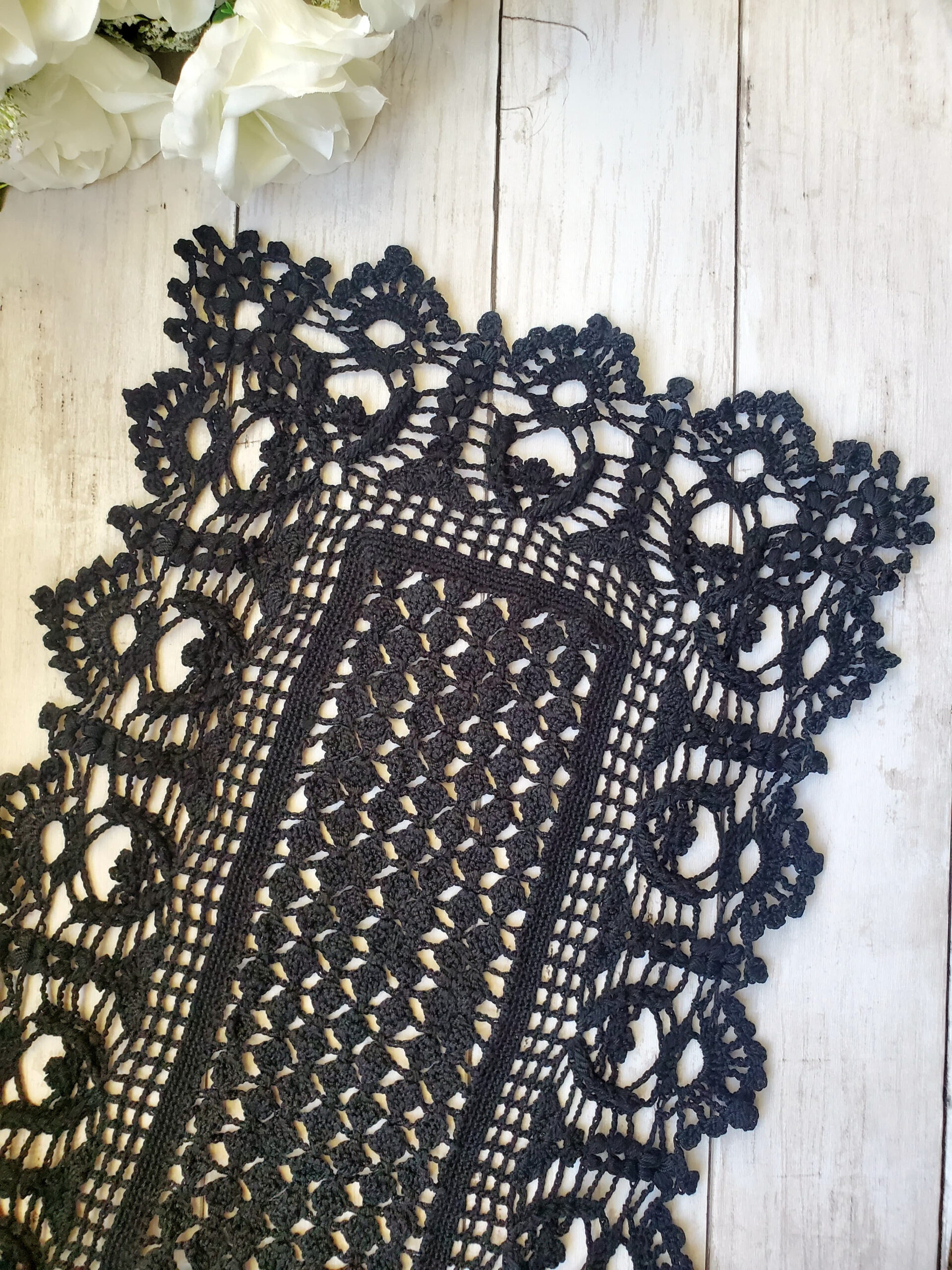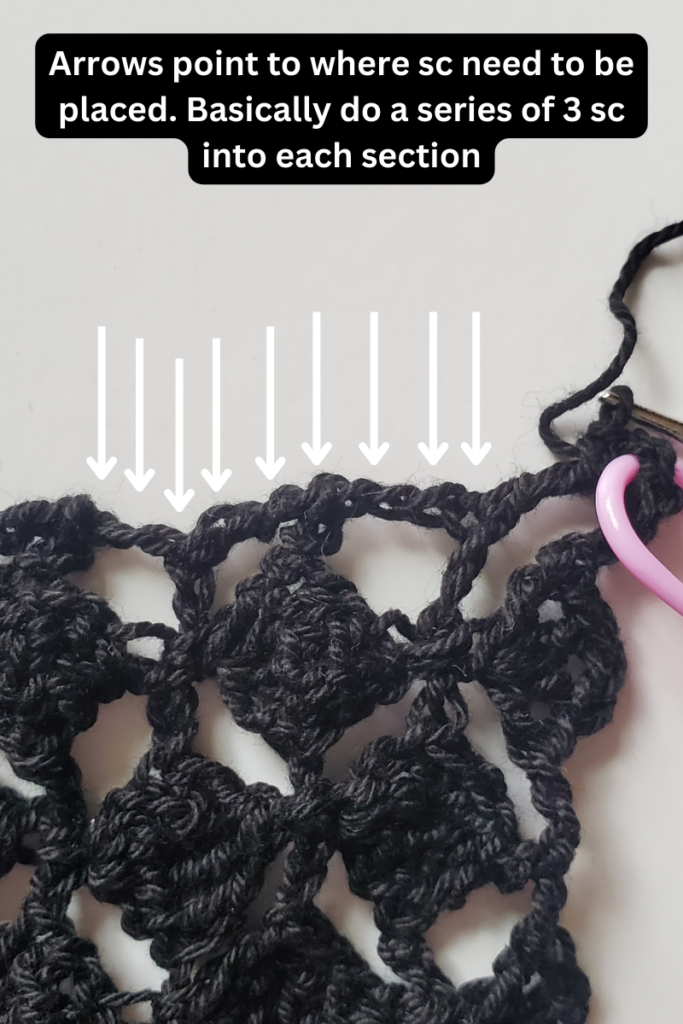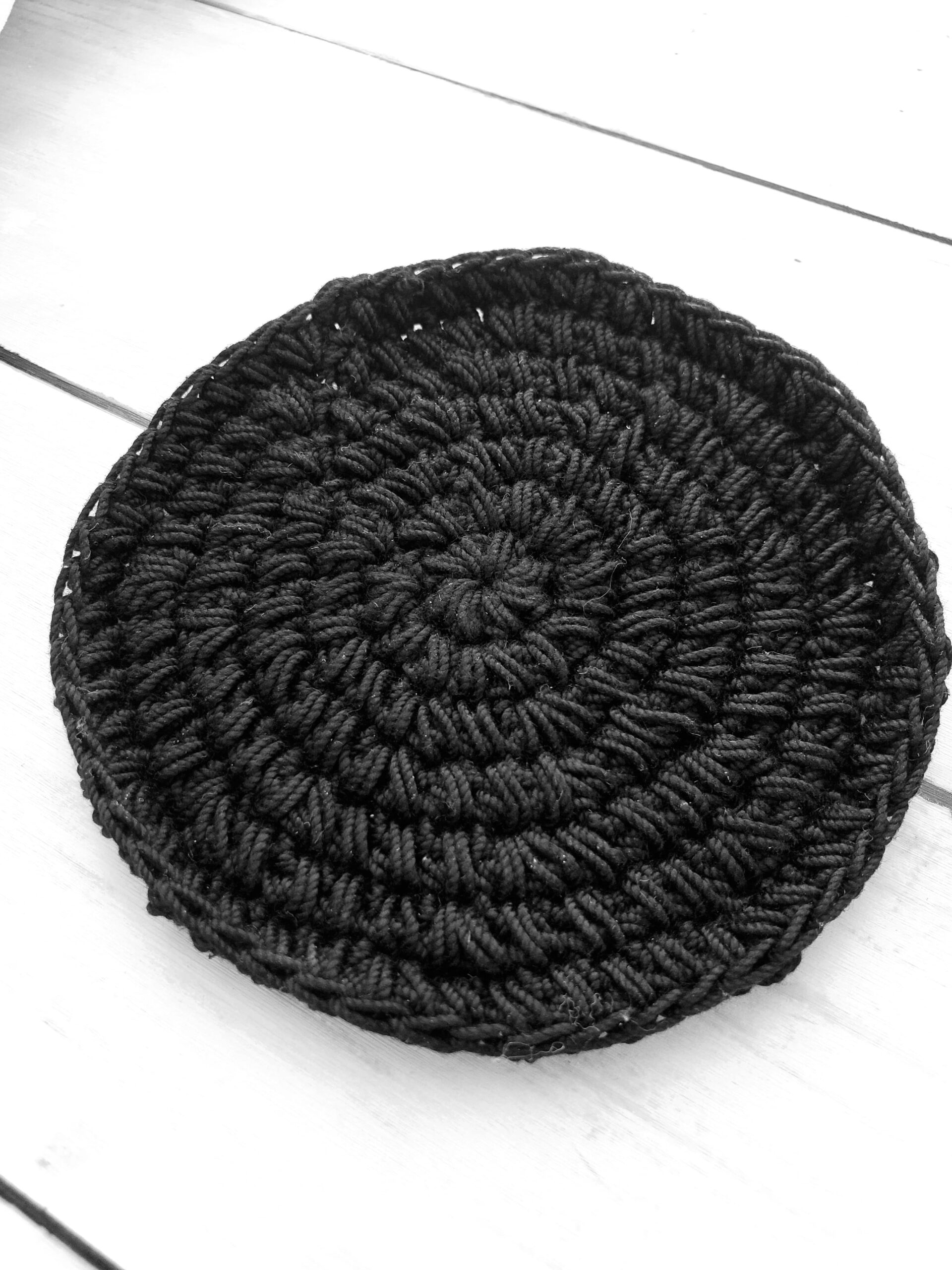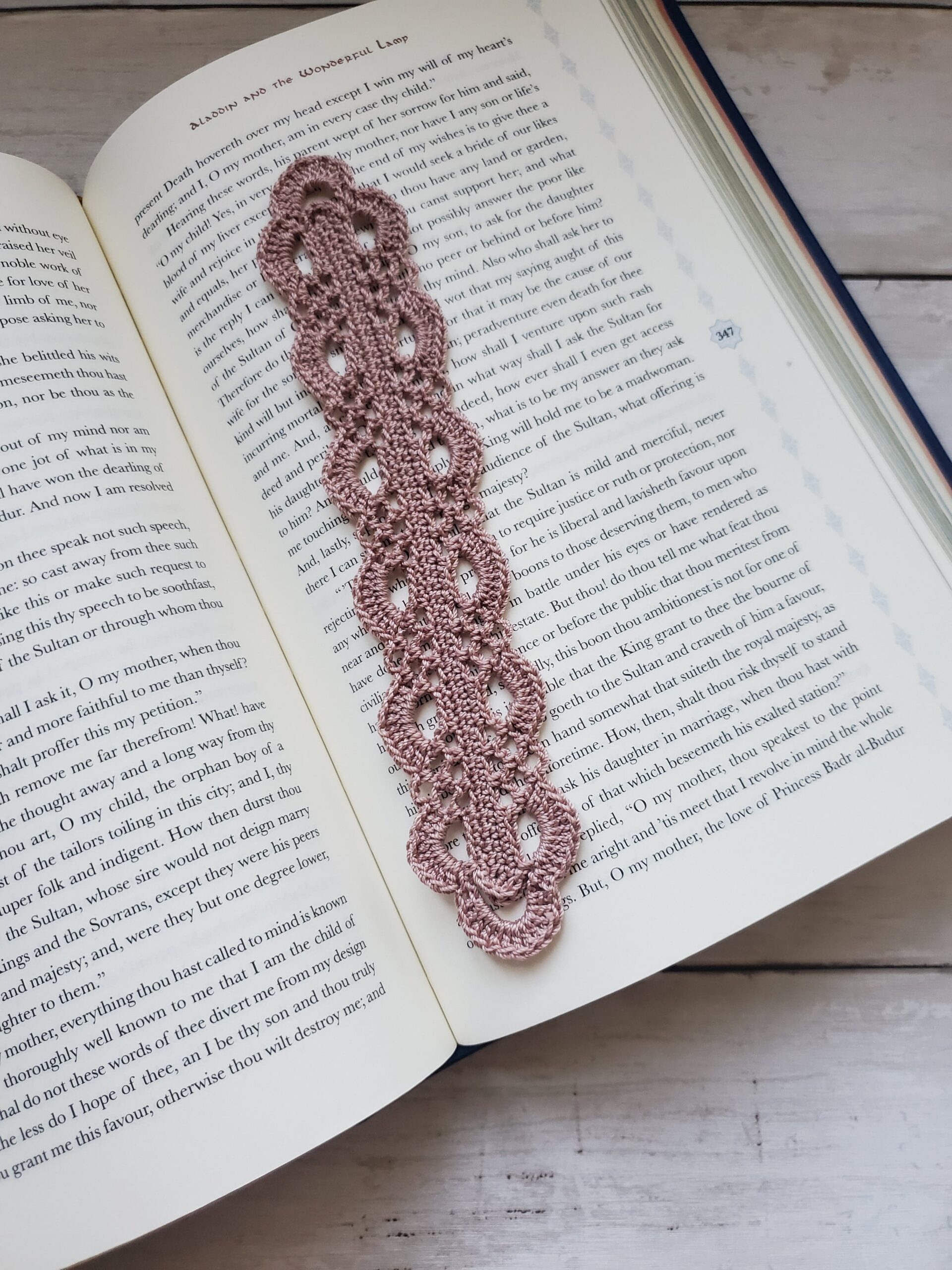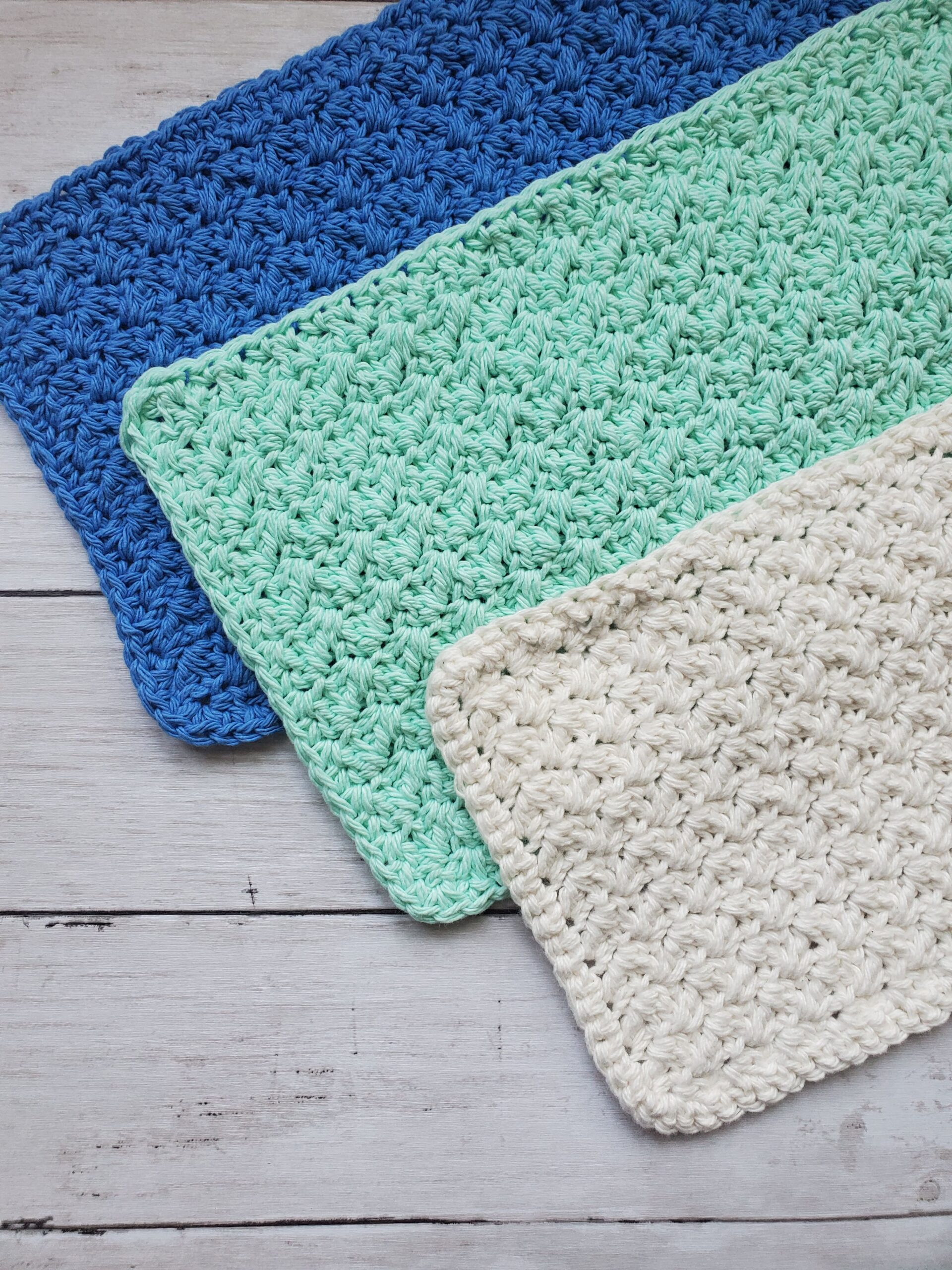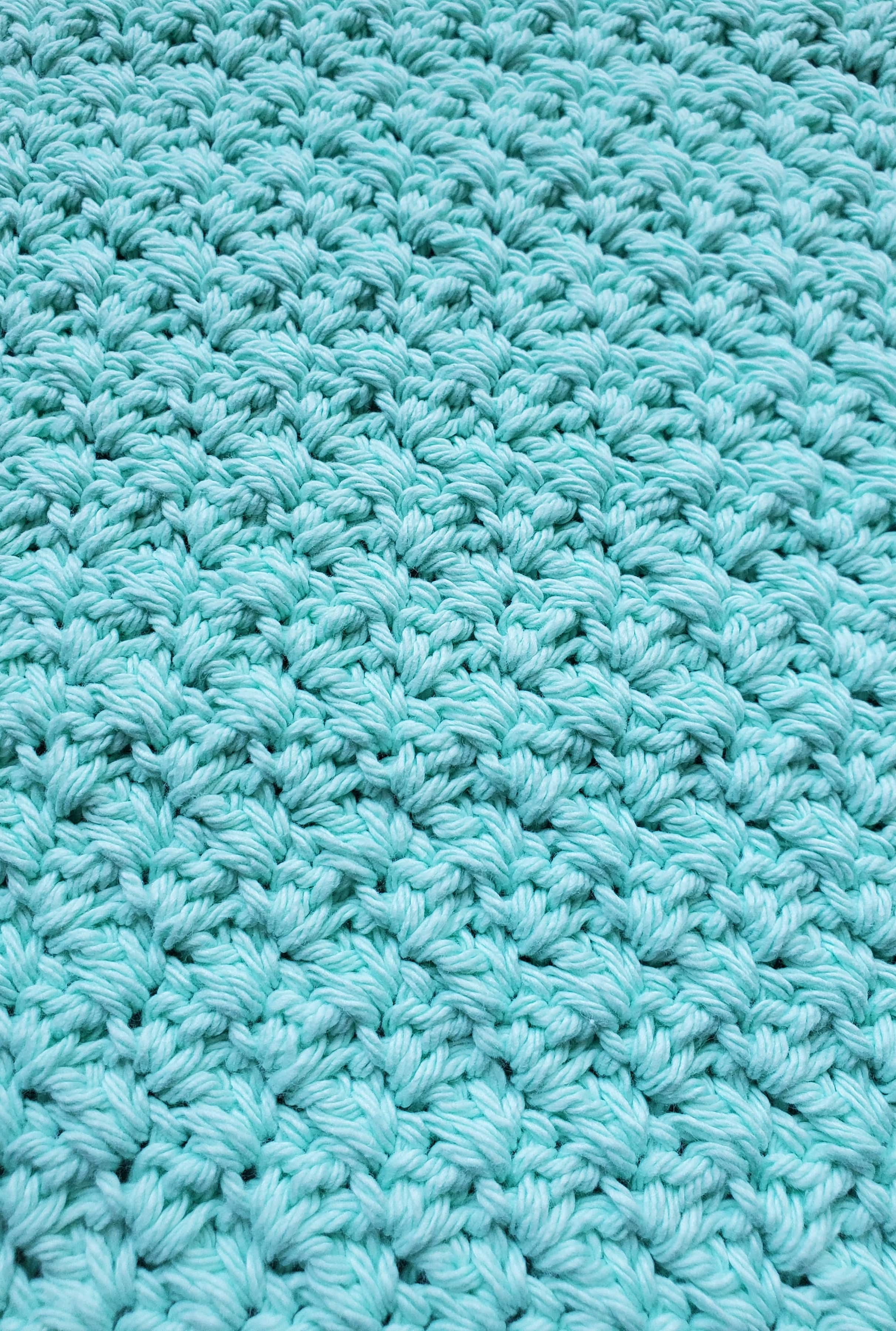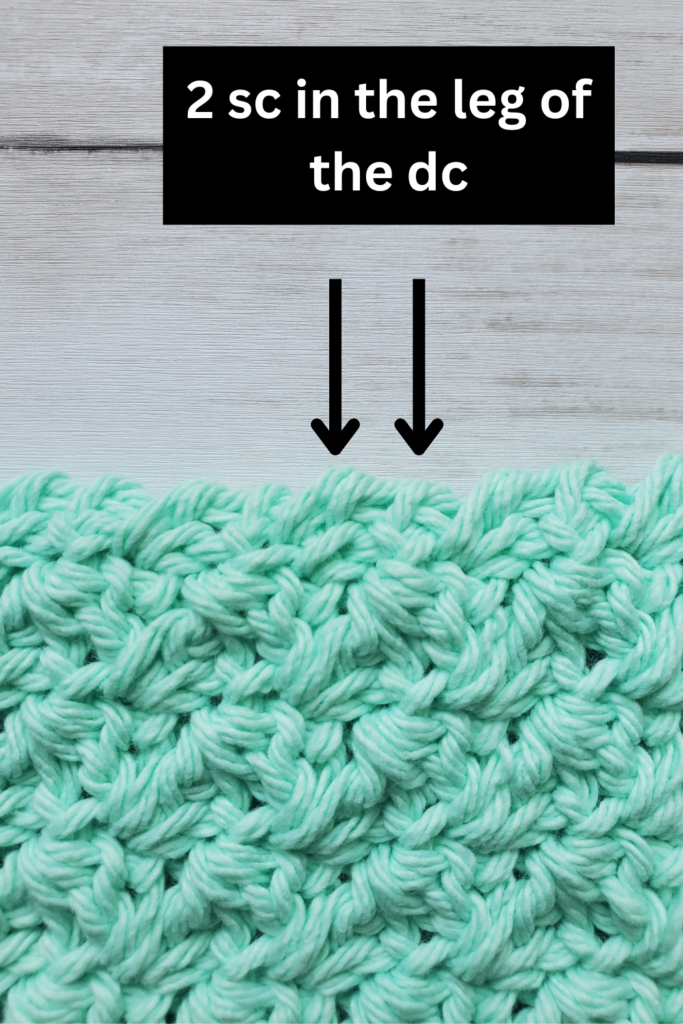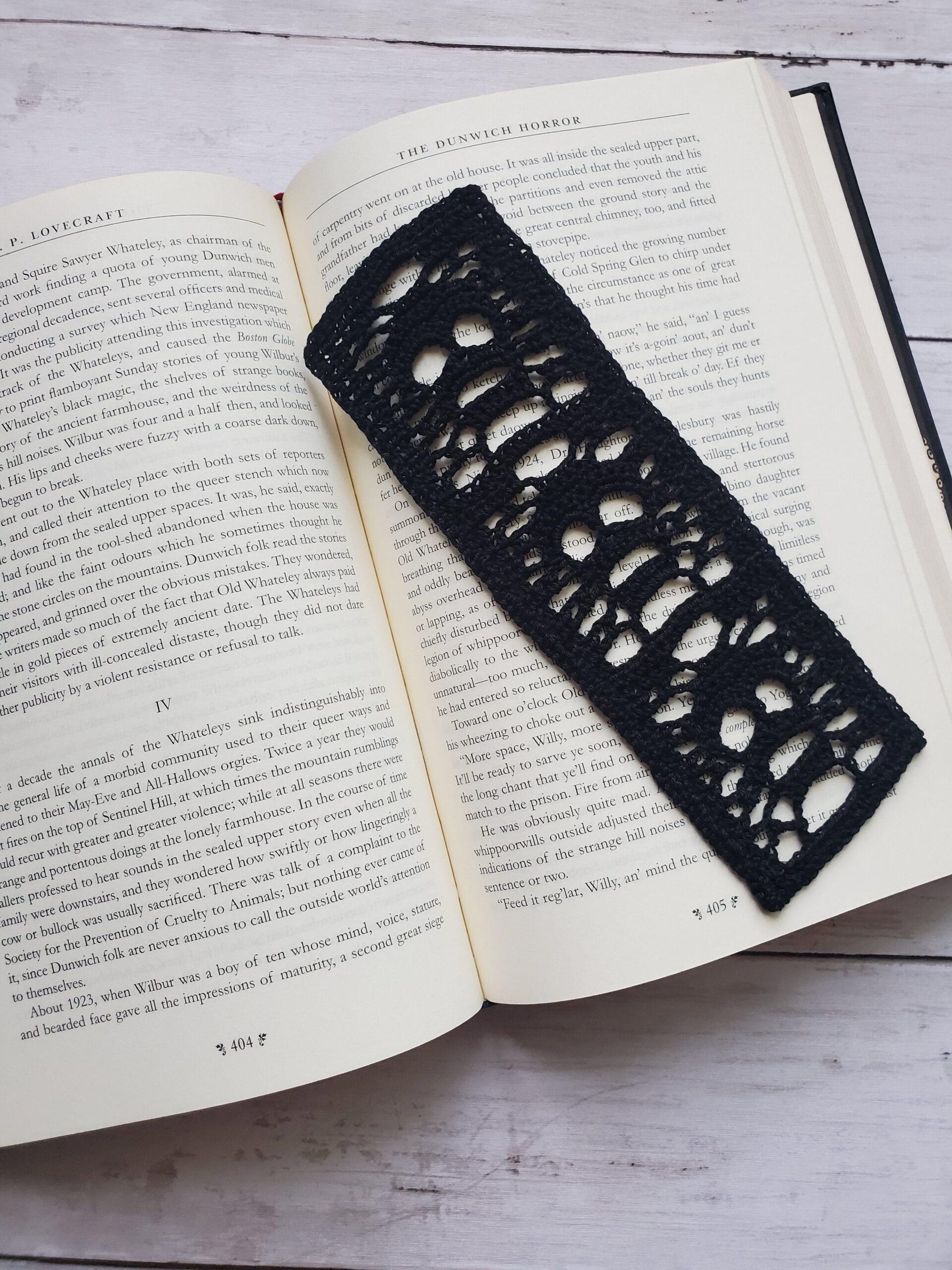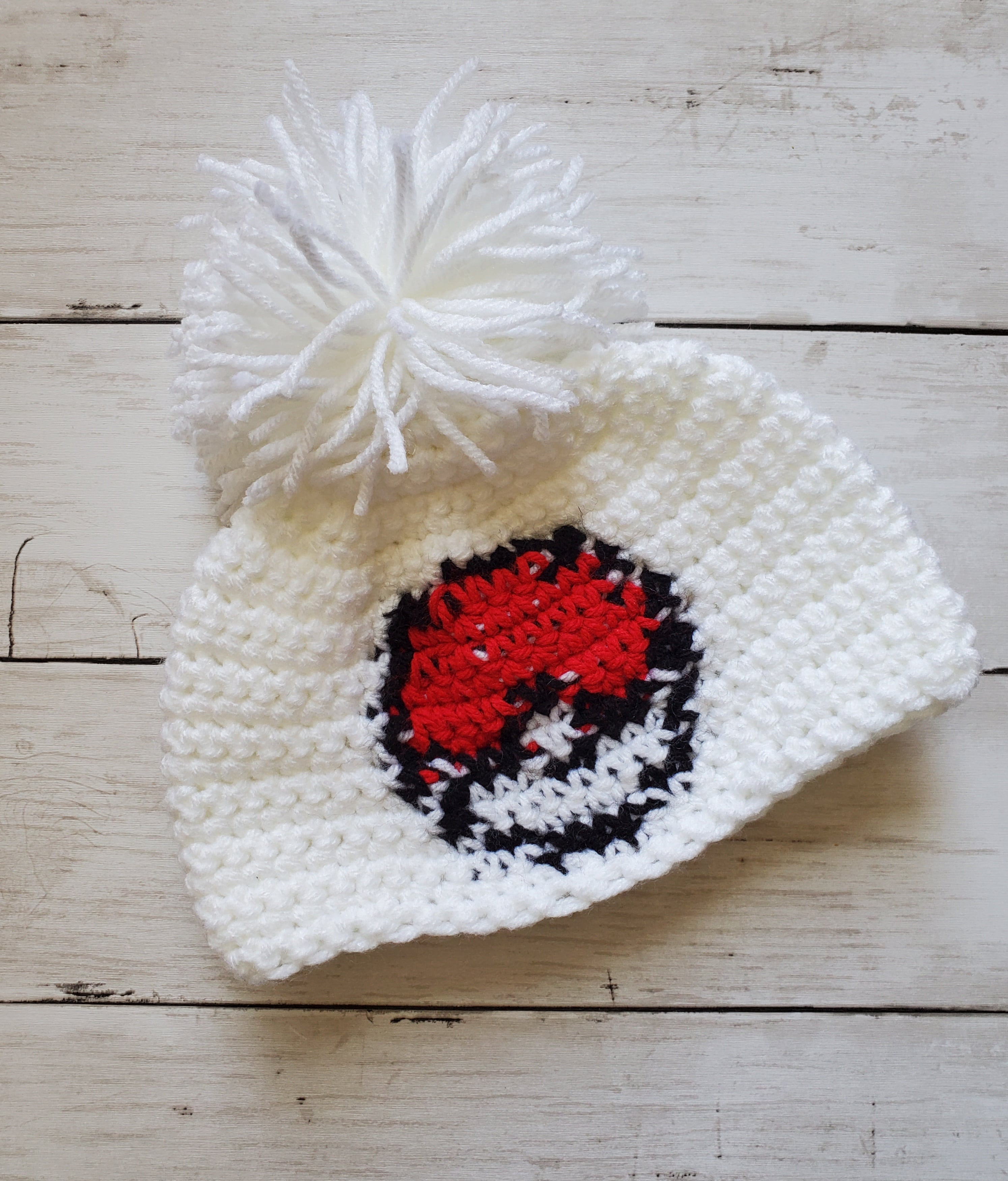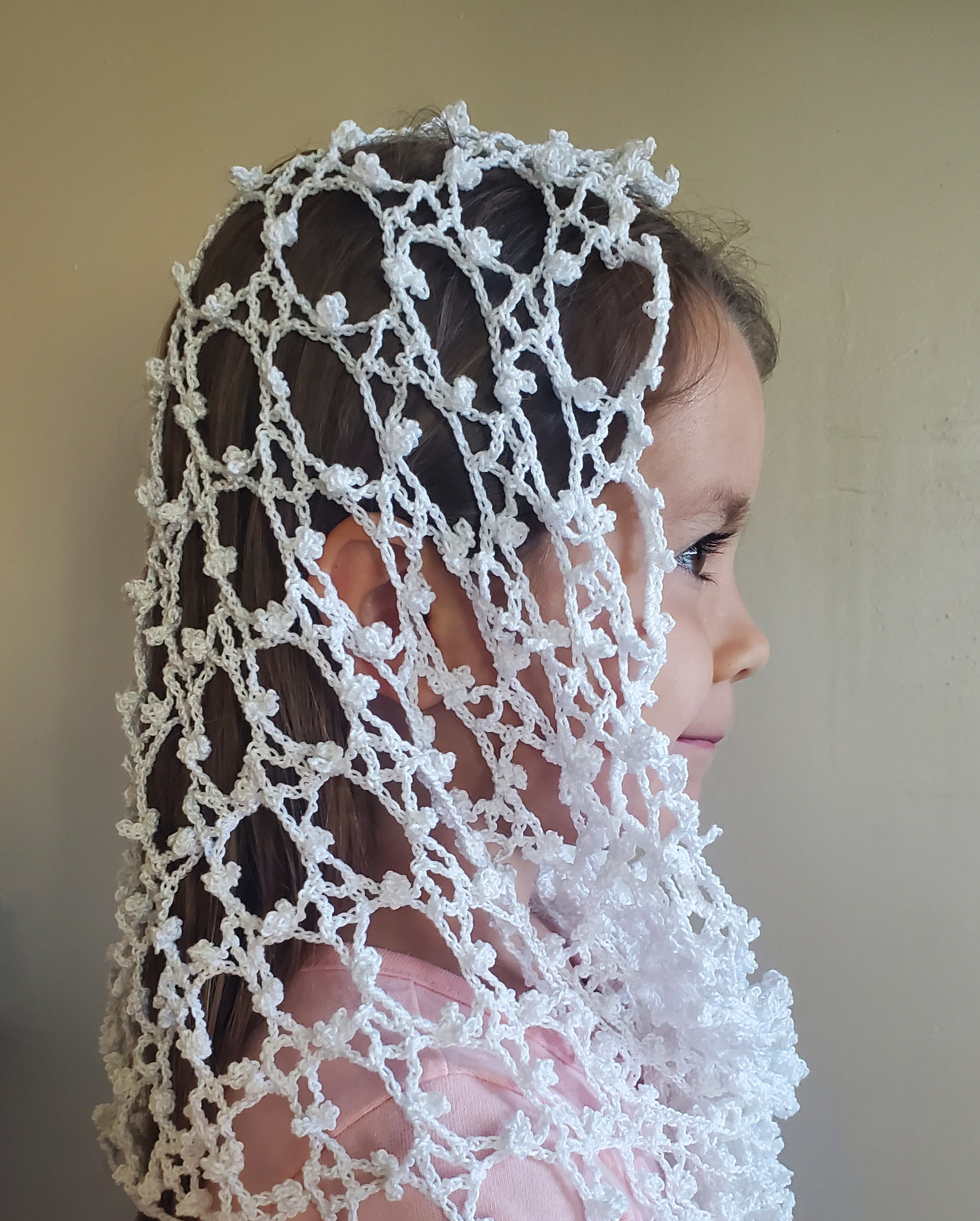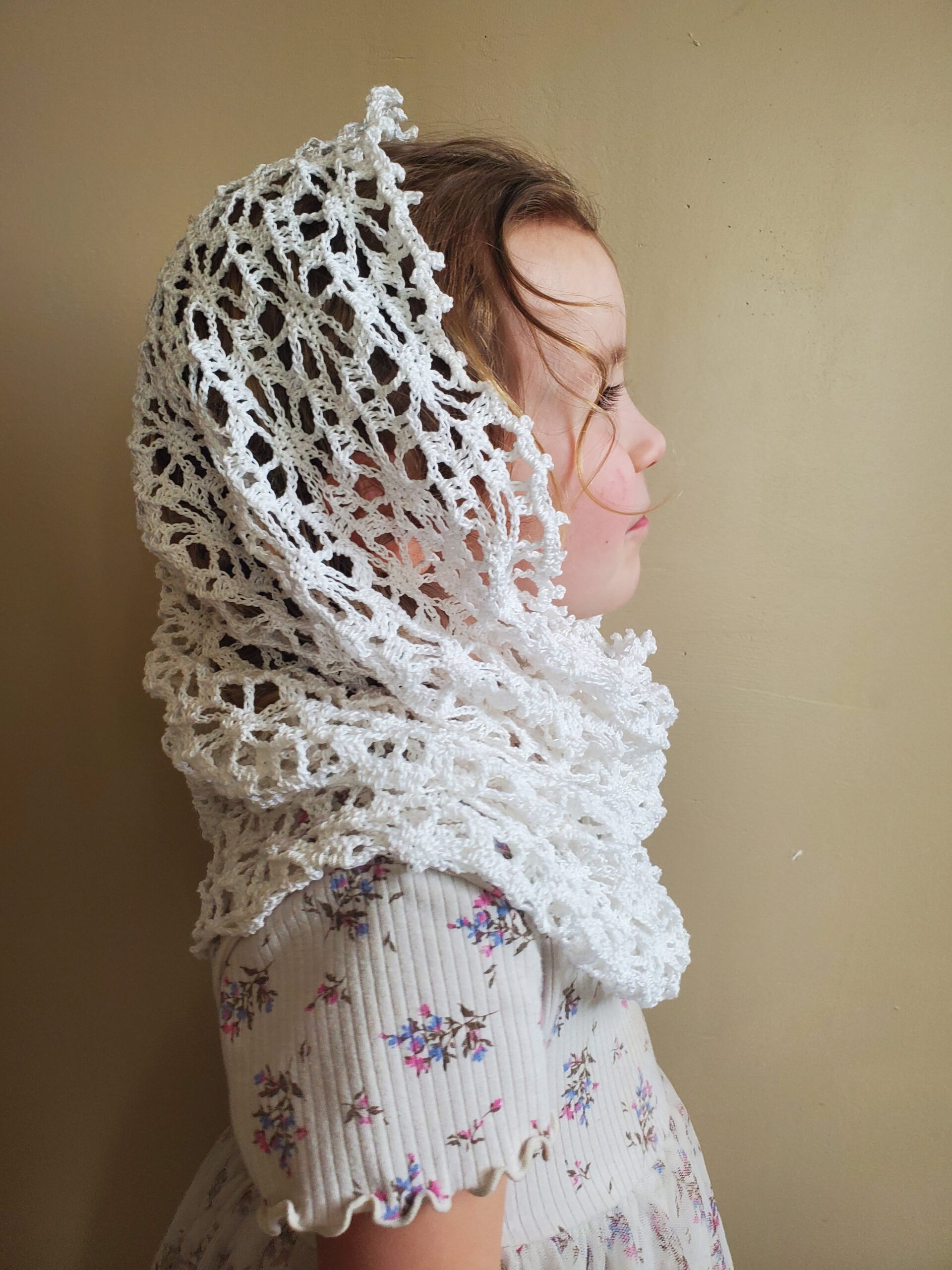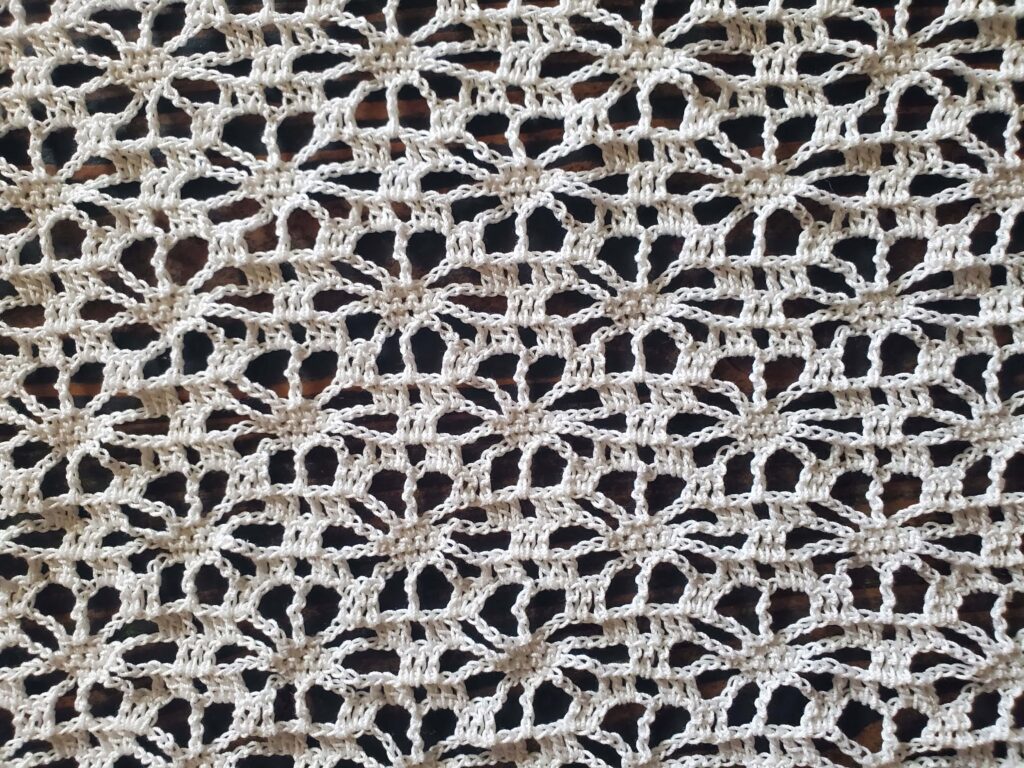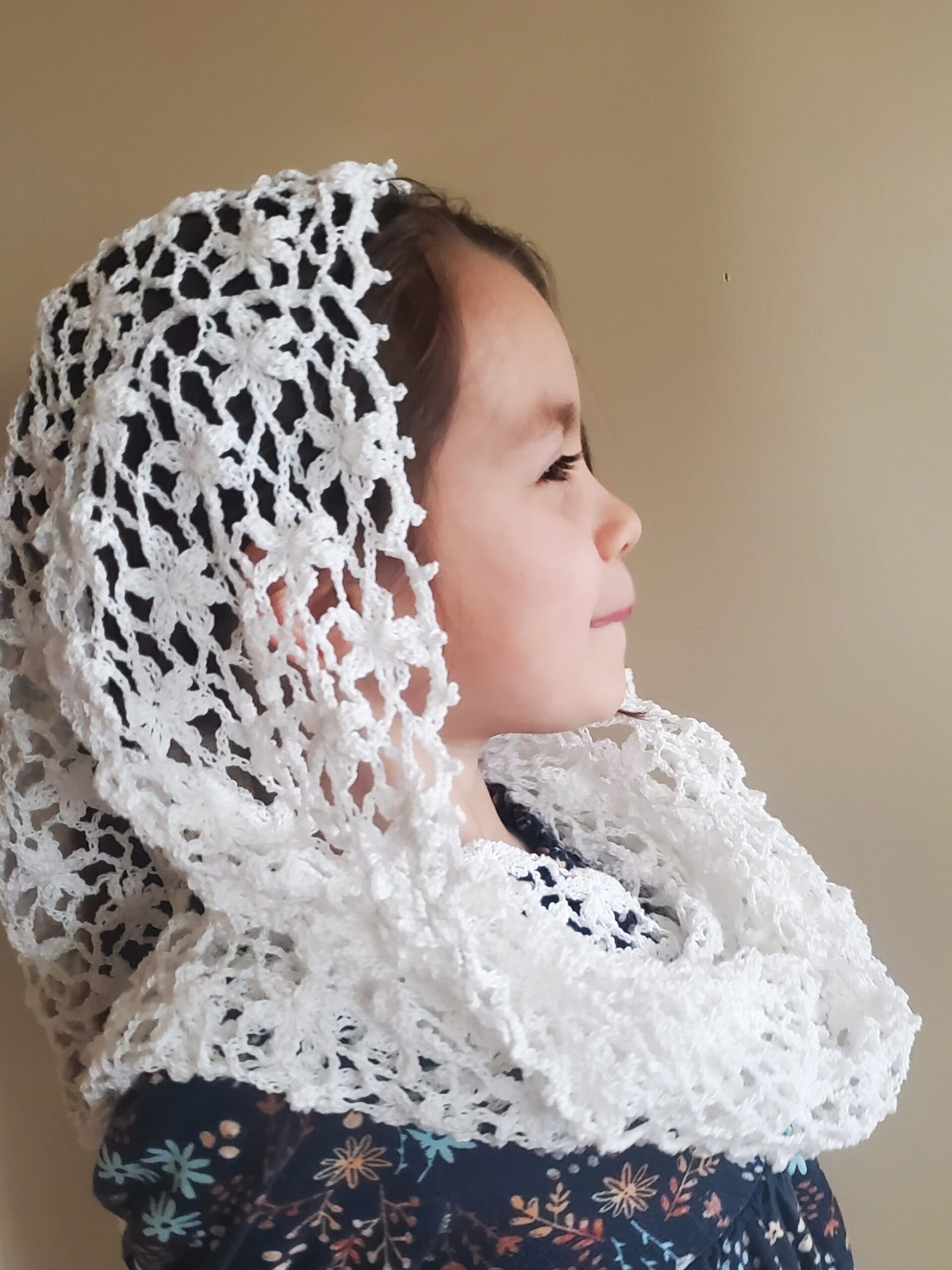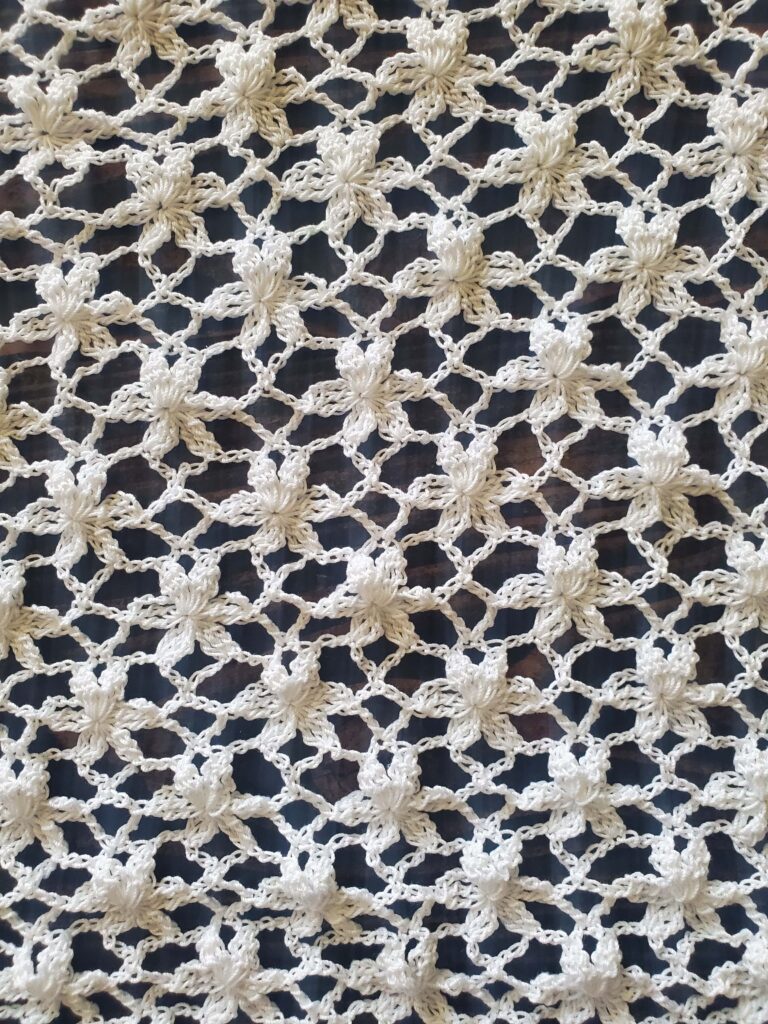Crochet Legend of Zelda Doily
Hello everyone, today I have a new crochet pattern I would like to share with you, a Crochet Legend of Zelda Doily!
I’ve been feeling nostalgic lately and although I don’t play as much as I used to, I’m still a big fan of The Legend of Zelda series. So I thought I would combine my hobby of crocheting, with my love for one of my favorite video games and created this pattern.
This pattern displays the iconic Triforce symbol inside a mesh, surrounded by a more solid border and then finished with a shell picot combo.
This doily is a small square, measuring about 7” x 7” after blocking. Perfect for displaying in a picture frame or placing under decorative pieces.
I decided to play around with this pattern using three different yarn colors. I thought a gold and a dark green would best represent the Zelda franchise, along with a classic white thread. The gold reminds me of the actual Triforce and the dark green, of the forest Link comes from (or his traditional clothes!)
Related Posts:
- Filet Crochet Legend of Zelda Hearts Pattern
- Crochet Cojiro The Blue Cucco Pattern
- Crochet Triforce Dishcloth Pattern
Filet Crochet Technique
I am using a technique called filet crocheting. It’s a way of crocheting where you use “open” or “solid” squares to make a picture or design.
If you know how to do this technique, you can skip down to the pattern, however if you do not, no worries! I went ahead and wrote out instructions for those who are not familiar with filet crocheting. After a few rows, you will understand how this is performed easily.
You will either use a series of (dc, ch 1, skip a st, dc into the next st) to create a open square OR 3 dc in the next 3 sts to make a solid square.
That’s it, it seems easy enough, but if you are making a picture, a chart is very helpful to use to keep you on track.
I am using the free version of StitchFiddle to create a chart that has the Triforce design I want. I will have the chart below if written instructions make your head hurt (I know they hurt mine sometimes!).
What Do You Use Doilies For?
I use my doilies as decorations in the house. I typically use them underneath candles, or small centerpieces to make them feel more complete.
Placing this Crochet Legend of Zelda Doily in a picture frame and hanging it on the wall would add some cool and unique decor to your home.
You could also gift this to a family member, significant other, or friend that enjoys the game series.
Do I Need to Block This?
Yes, it is preferred to block this doily.
When you are crocheting doilies, it’s recommended to block your work when finished so it lays totally flat. Some people like to spray a starch solution on them so they are more stiff.
Here is how I block my doilies:
- Get blocking board(s), pins, a bowl of water and a towel.
- Place the doily in the water bowl and let it soak for a minute or two.
- Take the doily out, let the water drip back in the bowl (do not wring it out), place on towel and pat it dry.
- Place on blocking board and pin to size that you desire.
- Let it dry for a day or two.
If you don’t have a blocking board, that is totally okay, this doily isn’t super big, so if you have a large enough piece of cardboard or even a pizza box, you can pin it on there. I’ve pinned many doilies that way and all have come out great.
Please note that some links in this post may be affiliate links. That means that if you click on these links and make a purchase, I may receive a commission at no extra cost to you. You can find more information about our disclosure policy here. Thank you for your support.
Materials Needed:
- 1.65mm Crochet Hook
- Red Heart Classic Crochet Thread size 10 in White
- OR Artiste Cotton Crochet Thread size 10 in Gold Dust
- OR Artiste Cotton Crochet Thread size 10 in Emerald
- Scissors
- Tapestry Needle
- Blocking Board or Cardboard
- Pins
Abbreviations Used:
- Sl st – slip stitch
- Ch – chain
- Sc – single crochet
- Dc – double crochet
- Ch 3 Picot – (ch 3, sl st into 3rd ch from hook)
Special Instructions:
- Starting Ch 4s count as a dc and ch 1 unless specified otherwise.
- Solid square = 3 dc in a row
- Open square = dc, ch 1, skip a st, dc in next st
- Instead of a stitch count for each row, I am using the number of open or solid squares you should have in ().
- Some of these rows will mirror the row before it, meaning that solid squares are placed on solid squares and open squares are placed on open squares.
Here is a chart that I used to help me make the inside of this pattern. Info for the border is found below. Yellow squares indicate a solid square and the white squares indicate an open square.
Crochet Legend of Zelda Doily Pattern
Ch 47
Row 1: Turn, dc into 7th ch from hook. Ch1, skip 1 ch, *dc into next ch, ch 1, skip 1 ch, dc into next* Repeat from *to*. The last ch should end with a dc. (21 open squares)
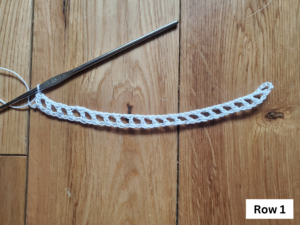
Row 2: Ch 4 (counts as dc and ch 1), turn, skip ch 1, *dc into next dc, ch 1, skip ch 1, dc into next dc* Repeat from *to* (21 open squares)
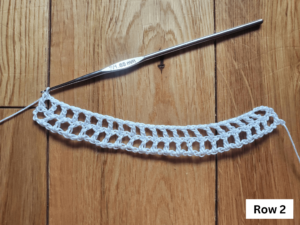
Row 3: Ch 4 (counts as dc and ch 1), turn, skip ch 1, dc into next dc, ch 1, skip ch 1, dc into next dc, *dc into ch 1 space, dc into next dc* Repeat from *to* for a total of 17 squares, you will have 2 more squares from row 2, ch 1, skip ch 1, dc into next, ch 1 skip ch 1, dc into last dc. (17 closed squares, 4 open squares)
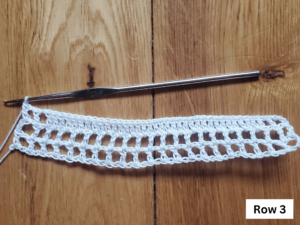
Row 4: Ch 4 (counts as a dc and ch 1), turn, skip ch 1, dc into next dc, ch 1, skip ch 1, dc into next 35 sts, ch 1, skip ch 1, dc into next dc, ch 1, skip 1 ch, dc into next ch. (17 closed squares, 4 open squares)
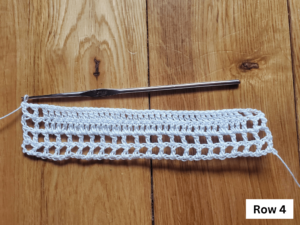
Row 5: Ch 4, (counts as dc and ch 1), turn, skip ch 1, dc into next dc, ch 1, skip ch 1, dc into next dc, ch 1, skip a st, dc into next st for a total of 3 open squares, *(dc into next 14 sts for 7 solid squares)*, ch 1, skip a st, dc into next dc. Repeat from *to.*
Ch 1, skip a st, dc into next dc, ch 1, skip ch 1, dc into next dc, ch 1, skip a ch, dc into next ch (14 solid squares, 7 open squares)
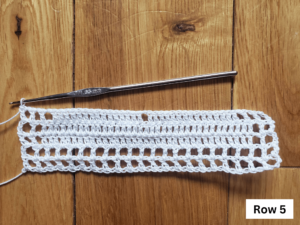
Row 6: Ch 4, (counts as dc and ch 1), turn, skip ch 1, dc into next dc, (ch 1, skip ch 1, dc into next dc x2), dc into next 14 sts, ch 1, skip ch 1 space, dc into next 15 sts, (ch 1 skip ch 1, dc into next dc x3 times). (14 solid squares, 7 open squares)
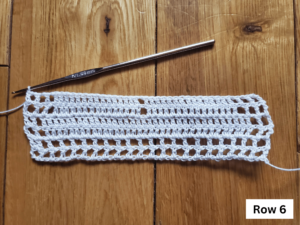
Row 7: Ch 4, turn, skip ch 1, dc into next dc, (ch 1, skip ch 1, dc into next dc x2), ch 1, skip a st, dc into next (4 open squares made). Dc into next 10 sts, ch 1 skip a st, dc into next st, ch 1, skip ch 1 space, dc into next st, ch 1, skip a st, dc into next st (3 open squares made)
Dc into next 10 sts, ch 1 skip a st, dc into next st, (ch 1, skip a st, dc into next dc x3 times) (4 open squares made)
Row 8: This row will mirror Row 7, place open squares on top of open squares and solid squares on top of solid squares.
Ch 4, turn, skip ch 1, dc into next dc, (ch 1, skip a st, dc into next st x3) (4 open squares made)
Dc into next 10 sts, (ch 1 skip ch 1, dc into next dc x3) (3 open squares made)
Dc into next 10 sts, (ch 1, skip ch 1, dc into next dc x4) (4 open squares made)
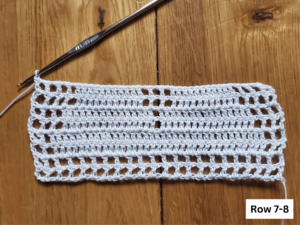
Row 9: Ch 4, turn, skip a ch, dc into next dc, (ch 1, skip ch 1, dc into next dc x3), ch 1, skip a st, dc into next st (5 open squares made)
dc into next 6 sts, ch 1, skip a st, dc into next dc, (ch 1, skip ch 1, dc into next dc x3), ch 1, skip a st, dc into next st (5 open squares made),
dc into next 6 sts, ch 1, skip a st, dc into next st, (ch 1, skip ch 1, dc into next dc x4 times) (5 open squares made). (15 open squares, 6 solid squares).
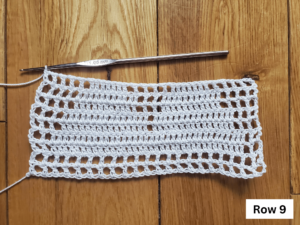
Row 10: This row will mirror Row 9. Place open squares on top of open squares and solid squares on top of solid squares.
Ch 4, turn, skip ch 1, dc into next dc, (ch 1, skip ch 1, dc into next dc x4) (5 open squares made)
Dc into next 6 sts
(Ch 1, skip ch 1, dc into next dc x5) (5 open squares made)
Dc into next 6 sts
(Ch 1, skip ch 1, dc into next dc x5) (5 open squares made) (15 open squares, 6 solid squares)
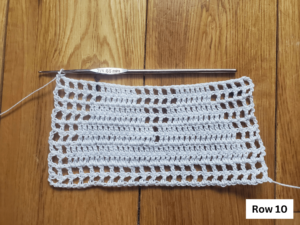
Row 11: Ch 4, turn, skip ch 1, dc into next dc, (ch 1, skip ch 1, dc into next dc x4), ch 1, skip a st, dc into next st (6 open squares made)
Dc into next 4 sts, (dc into ch 1 space, dc into next dc x5) dc into next 4 sts
Ch 1, skip a st, dc into next st, (ch 1, skip ch 1, dc into next dc x5) (6 open squares made) (12 open squares, 9 solid squares)
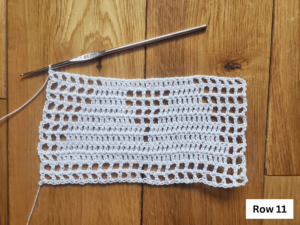
Row 12: This row will mirror Row 11.
Ch 4, turn, skip ch 1, dc into next dc (ch 1, skip ch 1, dc into next dc x5) (6 open squares made)
Dc into next 18 sts
(Ch 1, skip ch 1, dc into next dc x6) (6 open squares made) (12 open squares, 9 solid squares)
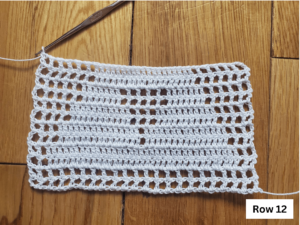
Row 13: Ch 4, turn, skip ch 1, dc into next dc, (ch 1, skip ch 1, dc into next dc x5), ch 1, skip a st, dc into next st (7 open squares made)
Dc into next 14 sts
Ch 1, skip a st, dc into next st, (ch 1, skip ch 1, dc into next dc x6) (7 open squares made) (14 open squares, 7 solid squares)
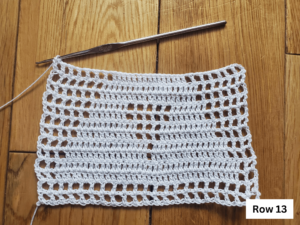
Row 14: This row will mirror Row 13.
Ch 4, turn, skip ch 1, dc into next dc, (ch 1, skip ch 1, dc into next dc x6) (7 open squares made)
Dc into next 14 sts
(Ch 1, skip ch 1, dc into next dc x7) (7 open squares made) (14 open squares, 7 solid squares)
Row 15: Ch 4, turn, skip ch 1, dc into next dc, (ch 1, skip ch 1, dc into next dc x6), ch 1, skip a st, dc into next st (8 open squares made)
Dc in next 10 sts
Ch 1, skip a st, dc into next st, (ch 1, skip ch 1, dc into next dc) (8 open squares made) (16 open squares, 5 solid squares)
Row 16: This row will mirror Row 15.
Ch 4, turn, skip ch 1, dc into next dc, (ch 1, skip ch 1, dc into next dc x7) (8 open squares made)
Dc into next 10 sts
(Ch 1, skip ch 1, dc into next dc x8) (16 open squares, 5 solid squares)
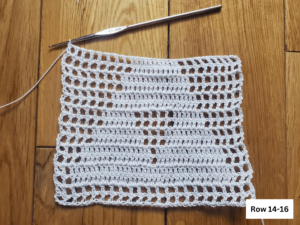
Row 17: Ch 4, turn, skip ch 1, dc into next dc, (ch 1, skip ch 1, dc into next dc x7), ch 1, skip a st, dc into next st (9 open squares)
Dc into next 6 sts
Ch 1, skip a st, dc into next st (ch 1, skip ch 1, dc into next dc x8) (9 open squares made) (18 open squares, 3 solid squares)
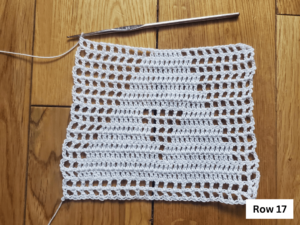
Row 18: This row will mirror Row 17
Ch 4, turn, dc into next dc, (ch 1, skip ch 1, dc into next dc x8) (9 open squares)
Dc into next 6 sts
(Ch 1, skip ch 1, dc into next dc x9) (9 open squares)
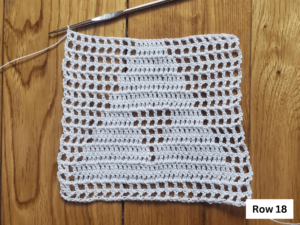
Row 19: Ch 4, turn, skip ch 1, dc into dc, (ch 1, skip ch 1, dc into next dc x8), ch 1, skip a st, dc into next st (10 open squares)
Dc into next 2 sts
Ch 1, skip a st, dc into next st, (ch 1, skip ch 1, dc into next dc x9) (10 open squares) (21 open squares, 1 solid square)
Row 20: This row will mirror Row 19.
Ch 4, turn, skip ch 1, dc into next dc, (ch 1, skip ch 1, dc into next dc x9)
Ch 1, skip a st, dc into next st
(Ch 1, skip ch 1, dc into next dc x10) (21 open squares)
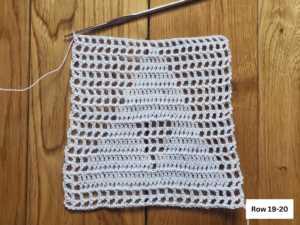
Row 21: This row will mirror row 20
Ch 4, turn, dc into next dc, (ch 1, skip ch 1, dc into next dc x20) (21 open squares
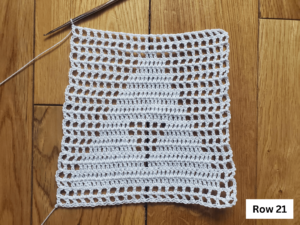
Border
Row 1: We will be crocheting down the first side of the square
Ch 4 (counts as dc and ch 1), dc into top of last dc crocheted in row 21. Ch 1, skip the length of the last dc in row 21, and dc into the top of the ch 3 in row 20, ch 1, skip the rest of the ch 3 from row 20 and dc into the last dc from row 19. Continue with ch 1, skipping the length of dc/ch 3, and dc into top of dc/ch3. See pic below for details.
Place last dc for this side in first ch in row 1. (Ch 1, dc into same ch x2 more times)
Ch 1, turn down the bottom side of square, skip ch, dc into same ch as next dc from row 2, ch 1, skip next ch, dc into same ch as next dc from row 2. Continue until next corner (dc ch 1, dc, ch 1, dc in next corner). Continue this way until you reach the beginning corner, place (dc, ch 1) into same space as starting ch 4, sl st to 3rd ch. (23 open squares on each side)
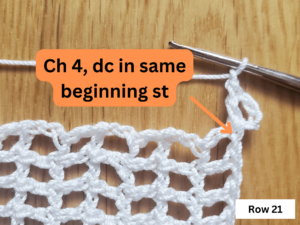
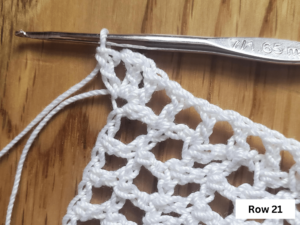
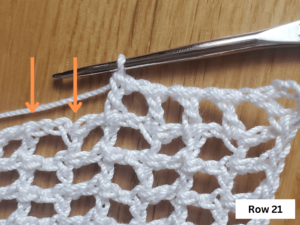
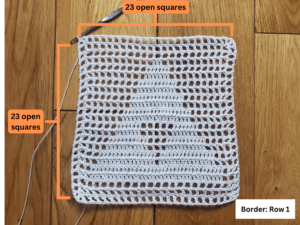
Row 2: ch 1, (2 sc, ch 2, 2 sc) in same st as joining st, *sc into next ch 1 space, sc into next dc* Repeat from *to* until next corner (2 sc, ch 2, 2 sc), continue placing sc into each dc and ch 1 space, and making corners in the same fashion. Sl st to first sc. (49 sc down each side with ch 2 in each corner)
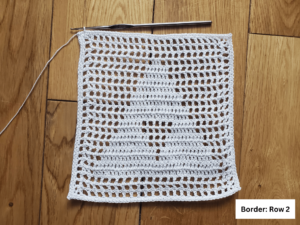
Row 3: Ch 4 (counts as dc and ch 1), skip a st, (3 dc, ch 2, 3 dc) in ch 2 corner space, ch 1, skip a st (you might need to scoot your last dc over to see where the first st is), dc into next 3 sts, *ch 1, skip a st, dc into next 3 sts.* Repeat from *to* until next corner. You should have 1 st left before the next corner. (3 dc, ch 2, 3 dc) into next ch 2 corner space.
Continue this way around, repeating from *to,* and making corners in same fashion. Place last 2 dc in the 2 sts before the starting ch, sl st into 3rd ch. (14 groups of 3 dc on each side with ch 2s in each corner)
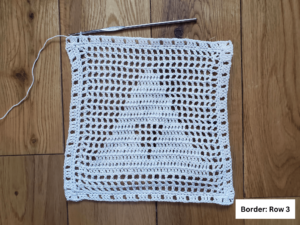
Row 4: Ch 3 (counts as dc), dc into ch 1 space, dc into next dc, ch 1, skip a st, [dc into next dc, (2 dc, ch 2, 2 dc) in ch 2 corner space, dc into next dc], *ch 1, skip a st, dc into next dc, dc into ch 1 space, dc into next dc.* Repeat from *to* until next corner Repeat from [ to ] for the next corner spaces. Repeat from *to* for sides.
On last side, finish with ch 1 and sl st to top of starting ch 3 (15 groups of 3 dc on each side with ch 2s in each corner)
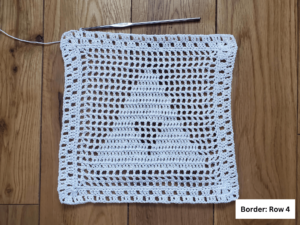
Row 5: Ch 4 (counts as dc and ch 1), skip a st, dc into next dc, dc in ch 1 space, dc into next dc, ch 1, skip a st, [dc into next dc, (2 dc, ch 2, 2 dc) in ch 2 corner space, dc into next dc], *ch 1, skip a st, dc into next dc, dc into ch 1 space, dc into next dc.* Repeat from *to* down the sides.
Repeat from [ to ] for ch 2 corner spaces. Sl st to top of starting ch 3 (16 groups of 3 dc down each side with ch 2 corner spaces)
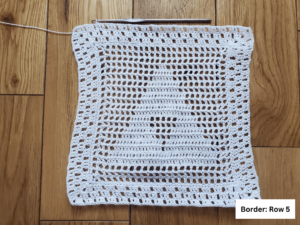
Row 6: Sl st into next ch 1 space. Ch 3 (counts as dc), (2 dc, ch 3 picot, 3 dc) in same ch 1 space, skip next 3 dc, sc into next ch 1 space, skip next 3 dc, in ch 2 corner space make (5 dc, ch 3 picot 5 dc), *skip next 3 dc, sc into next ch 1 space, skip next 3 dc, (3 dc, ch 3 picot, 3 dc) in next ch 1 space.* Repeat from *to* down the sides.
Place (5 dc, ch 3 picot, 5 dc) in ch 2 corner spaces. Sl st to first st.
Cut with scissors, weave in any ends with tapestry needle.
Block with pins on blocking board.
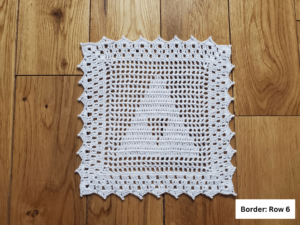
And that’s it! I hope you enjoyed this beautiful Crochet Legend of Zelda pattern. Until next time!
Other Posts You May Like:





